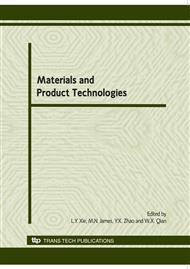p.810
p.815
p.820
p.825
p.830
p.836
p.841
p.846
p.851
Feasible Solution of Profile-Shift Coefficient for Involute Internal Gear Pair in Zero-Tooth-Difference Mechanism
Abstract:
Zero-tooth-difference internal gear mechanism is applied in thrust-eccentric gear coupling designed particularly for oil-submerged motor driven progressing cavity pumping system. The petroleum output of pump depends on the distance (eccentricity) between the canters of external and internal gears proportionally, while the eccentricity is affected by the profile-shift coefficient (abbreviated hereafter as PSC). Larger PSC can increase the amount of eccentricity but decrease the strength of gear, especially for small numbers of teeth. The optimum coupling relationship of radial and tangential PSC is just what to be found here. The work presented in this paper focuses on a method for determining the PSC of gears in the mechanism. The domain of initial values is prepared at first based on developed mathematical model. Then, according to tooth profile engagement equation and additional constraint conditions, a reasonable set of PSC is approached for different eccentricities. Moreover, the PSC can be modified and readjusted with optimum method until satisfied result is obtained finally.
Info:
Periodical:
Pages:
830-835
Citation:
Online since:
June 2010
Authors:
Price:
Сopyright:
© 2010 Trans Tech Publications Ltd. All Rights Reserved
Share:
Citation:


